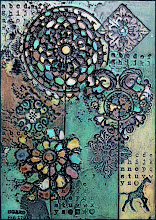 These two for Isabell have been made so that a friend can pick one to give to the little baby:
These two for Isabell have been made so that a friend can pick one to give to the little baby:  Corey's Mimi got this alphabet for him when I was exhibiting at the Athen ARTSfest last May. Corey loves animals:
Corey's Mimi got this alphabet for him when I was exhibiting at the Athen ARTSfest last May. Corey loves animals:  Sometimes doilies are just about overpowering:
Sometimes doilies are just about overpowering: 
The alphabets are also a good way to compare different color combinations:




































